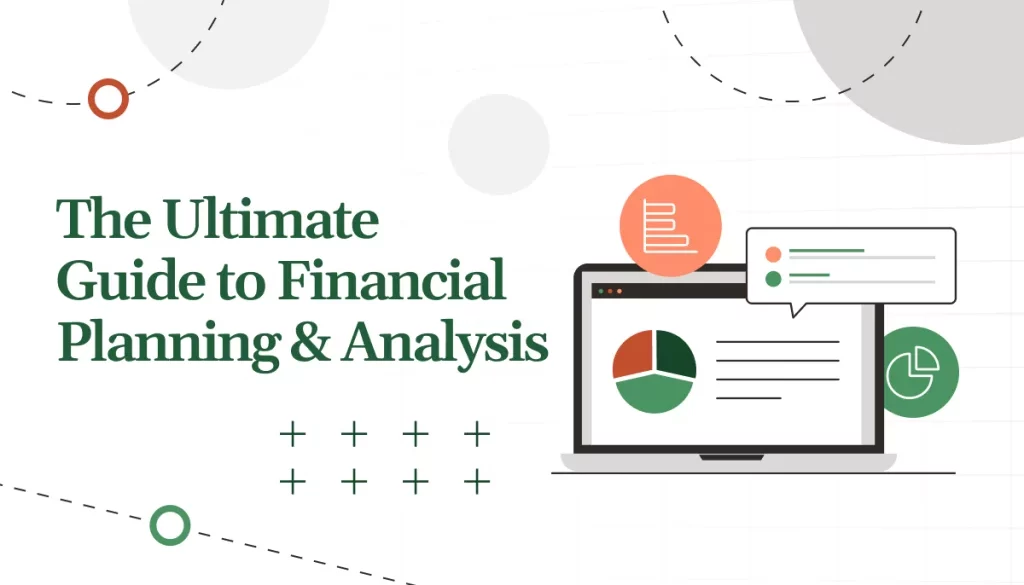The Essential Guide to Using Financial Planning and Analysis Software
Table of Contents
Introduction to Financial Planning and Analysis Software
Financial planning and analysis (FP&A) software is a powerful tool used by financial professionals to help businesses make sound decisions. It can be used for forecasting, budgeting, analyzing data, and more. The software allows users to quickly analyze data from multiple sources to get an accurate picture of the current financial situation and plan for the future.
FP&A software makes it easier for businesses to track their revenue streams, expenses, cash flow, debt levels, and other important metrics. This information helps them make informed decisions about investments, future projects, or expenses that may need to be cut in order to reduce costs or increase profits. Additionally, FP&A software can provide insights into potential risks as well as opportunities that could lead to better returns on investments over time.
The best financial planning and analysis tools solutions are tailored specifically to each business’s needs. Some common features that most FP&A solutions include are dashboards with visualizations of key performance indicators (KPI), financial reporting capabilities such as income statements and balance sheets with drill-down capability into underlying details of transactions or activities occurring in the business over time; budgeting tools with forecasting capabilities; forecasting tools which allow users to input assumptions about future events such as sales growth rates or inflation.
Benefits of Using Financial Planning and Analysis Software
Financial planning and analysis (FP&A) software is becoming increasingly popular as businesses strive to gain better insight into their financial performance. By leveraging the technology, companies are able to make data-driven decisions that lead to greater efficiency and cost savings.
The most obvious benefit of using FP&A software is the ability to collect and analyze data more effectively than ever before. With automated systems, it’s easy to monitor financial trends over time and detect any potential issues before they become a problem. This can save organizations a great deal of time and money that would have otherwise been wasted in manual analysis. Furthermore, by having access to accurate information in real time, businesses can make more informed decisions when it comes to budgeting or investments.
In addition to improved data collection and analysis, FP&A software also enables organizations to identify areas for improvement within their business operations. For instance, by analyzing cash flow patterns or revenue projections over certain periods of time, businesses can determine which areas need attention in order for them to reach their goals faster. This type of information can be invaluable when trying to increase profits or lower expenses on an ongoing basis.
Overview of Key Features of Financial Planning and Analysis Software
Financial planning and analysis software is designed to improve the accuracy and efficiency of financial reporting and analysis. This type of software provides a comprehensive solution for business owners, finance teams, and other stakeholders who need to track financial performance in order to make informed decisions.
The main features of financial planning and analysis software include:
1. Budgeting & Forecasting: The ability to create accurate budgets from historical data as well as forecasts based on current trends helps businesses plan for future growth. This feature enables users to adjust their plans accordingly based on any changes in the market or their own business operations.
2. Financial Analysis & Reporting: Financial reports give businesses an overview of their overall performance and can be used as a basis for projecting future revenue growth or identifying areas that need attention in order to meet specific objectives. In addition, these reports can help identify opportunities for cost savings or better utilization of resources.
3. Dashboards & Key Performance Indicators (KPIs): Dashboards provide real-time insights into how well your business is performing against key metrics such as sales, profitability, cash flow, etc., enabling more effective decision-making by providing up-to-date information at a glance. KPIs are also monitored closely within this type of software.
Popular Solutions on the Market
As technology continues to develop, there are more and more popular solutions on the market that businesses can use to streamline their operations. Here are some of the most popular solutions available for businesses that are looking to maximize efficiency and reduce costs.
Cloud Computing: Cloud computing is one of the most popular solutions on the market as it provides organizations with a flexible, cost-effective way to store data and run applications. Companies can use cloud computing services such as Amazon Web Services, Microsoft Azure, or Google Cloud Platform to access powerful computing resources without having to purchase physical hardware infrastructure. With cloud computing, businesses can scale easily when needed and minimize IT overhead costs.
Data Analytics: Data analytics is another popular solution that has become increasingly important in today’s business world. Companies use data analytics tools such as Tableau or Power BI to make sense of large amounts of data quickly and accurately in order to identify trends, gain insights into customer behavior, or boost operational efficiency. By leveraging data analytics tools strategically, organizations can uncover valuable information that helps them make better decisions and improve performance in multiple areas across their business.
Cost Considerations for Implementing Financial Planning and Analysis Software
Financial planning and analysis (FP&A) software is a critical tool for businesses of all sizes. It provides data-driven insights into financial operations, improves decision-making processes, and helps protect business interests. However, it’s important to consider the cost implications before deciding whether or not to implement FP&A software.
One of the primary costs associated with implementing FP&A software is the initial investment. The cost of an FP&A solution can vary greatly depending on features, functionality, and scalability needs. Most solutions are priced as either a one-time fee or subscription/license model; however, additional costs may be incurred for customization or integration services. It’s important to understand the total cost of ownership before making a purchase decision in order to ensure that it fits within your budget and meets your business goals over time.
In addition to purchasing costs, there are also onboarding and training expenses associated with setting up an FP&A system in your organization. Depending on the complexity of the system you select, you may need additional staff members who have expertise in financial planning and analysis systems – these individuals will need appropriate training in order to make effective use of the system.
How to Choose the Right Solution For Your Organization
Choosing the right solution for your organization is a critical decision. Not only will the right solution improve efficiency and help to drive revenue, but it can also help you stay competitive in an increasingly competitive market. Here are some tips on how to choose the right solution for your organization.
1. Assess Your Needs: Take a close look at what your organization needs from its technology solutions. Ask yourself questions like What type of data will be managed through this system? What processes do we need to automate? How much storage does our system require? Answering these questions can help narrow down potential solutions and ensure that you select one that fits your needs precisely.
2. Research Solutions: Once you have an idea of what kind of solution is best suited for your organization, begin researching potential solutions that fit within those parameters. Look at features, pricing, customer reviews, and other relevant information in order to make an informed decision about which product or service is best for you and your business goals.
3 . Consult with Experts: Don’t be afraid to reach out to experts who understand the complexities of different solutions on the market today; they can provide invaluable insights into choosing the right one for your business needs.
Conclusion
Financial planning and analysis software is a powerful tool for businesses seeking to maximize their profitability. It provides organizations with the ability to forecast and analyze financial data, enabling them to make smarter decisions on how best to allocate resources. Financial planning and analysis software also offer decision-makers access to more detailed financial reports, helping them better understand their organization’s financial health. With the right financial planning and analysis software, businesses can increase their profits while reducing risks associated with financial uncertainties.
Also Read : https://migatrendz.com/



